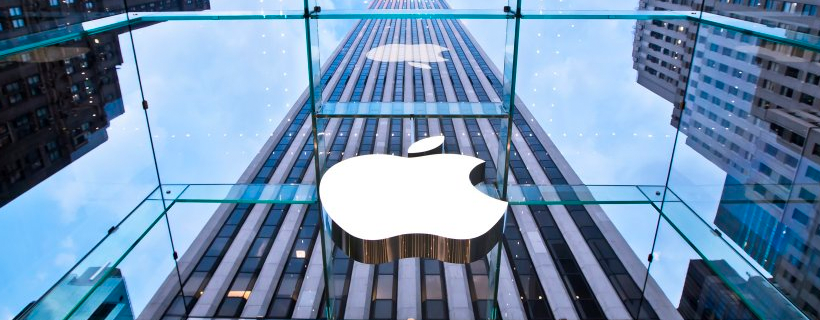- Today Apple became the first U.S. company in history to reach a $1 trillion market cap.
- What it tells us: In the long run doing the right thing is rewarded. Focus on one product, perfect it, protect user privacy, practice supplier responsibility, encourage sustainability, and promote digital well being.
- This valuation is driven by Apple’s higher purpose to enrich people’s lives.
- The company has been steadfast in its focus on the user (UI, reliability, privacy).
- Apple has embraced the innovator’s dilemma by discontinuing products near peak popularity in favor of a strategically superior alternative.
- We see meaningful upside to shares of AAPL given the ongoing shift to Apple as a Service.
$1 Trillion and Beyond
When I started covering Apple, I never thought we’d get here. At the time (2004) our view that Apple’s market cap could double was driven by an optimism around the iPod’s potential and its halo effect on the Mac business. Fun fact: in December of ’05, iPod accounted for 50.5% of revenue and now accounts for less than 1% of revenue. In April of 2012, we did think we would get to a trillion dollars, but we were wrong on the timing, incorrectly expecting we’d cross that mark in 2014.
Apple has embraced the innovator’s dilemma unlike any other company in history, which is best exemplified by the iPhone all but destroying the iPod business. This illustrates what’s most impressive, the company’s ability to rapidly innovate. Today, Apple has a growing base of 1.3 billion active devices, including just over 810 million active iPhones. In the future, the base of active devices will increasingly be made up of a mix of wearables (Apple Watch and Apple Glasses). The company’s higher purpose, to enrich people’s lives, will not change. This gives us confidence that Apple’s active device base and the revenue per user will continue to increase.
AAPL Investment Paradigms
About every 10 years, there is a new paradigm that drives investor thinking on the Apple story. It started with the growth of the Mac (’80-’85), then post-Jobs and competition from the PC (’85-’97), then the iPod + Mac halo effect (’01-’06), and most recently, the iPhone (’07-present). Today, we see measurable upside to its current market cap based on a more sustainable investment paradigm that we call Apple as a Service.
Drifting Away from Product Cycle Hype
The hype ahead of new product releases and the inevitable anxiety related to unit sales once a product ships will slowly go away, but it may take a couple of years. We still think anticipation around new products will influence shares, but that influence will be shorter-lived. For example, Apple will likely release a larger-screen iPhone along with a lower-priced iPhone this fall, which will be good for iPhone demand, but is unlikely to yield a super cycle (greater than 10% y/y iPhone unit growth). In the Apple as a Service paradigm, the company will not need a super cycle for the Apple story to remain favorable with investors. In the Jun-18 quarter, iPhone units grew at 1% y/y, making it the 8th consecutive quarter of “stable” iPhone unit growth (range of -5 to 5%) with an average of 1% growth.
Apple as a Service includes:
- Greater visibility in the iPhone business (62% of revenue), albeit at a 0-5% growth rate (see details here). This stability is representative of a hardware business performing increasingly like a software business, a positive for AAPL’s multiple.
- Services (see details here). Building off this predictable iPhone business, Services (now 15% of revenue) should grow at ~15% for the next few years.
- Capital return (see details here). Over the next 3 years, we expect ~$100B in annual capital return, which should result in the company reaching net cash neutral. Once the company becomes net cash neutral (likely end of FY21) capital return to investors will step down to $40-$50B per year. Assuming AAPL shares rise, that buyback alone could move shares ~20% higher over the next 3 years.
- New products (see details here). Innovation will still be required for Apple to maintain its high iPhone retention levels (above 90%), and, importantly, for the company to pioneer future tech trends. However, in the new Apple as a Service paradigm, new product categories represent optionality to the AAPL investment story. These include original content, AR (including glasses), personal health, and automotive autonomy are opportunities not yet reflected in Apple’s valuation.
Putting it all together, this yields a stable business that is growing at 5-10% per year and returning the majority of its profits to shareholders.
Disclaimer: We actively write about the themes in which we invest: virtual reality, augmented reality, artificial intelligence, and robotics. From time to time, we will write about companies that are in our portfolio. Content on this site including opinions on specific themes in technology, market estimates, and estimates and commentary regarding publicly traded or private companies is not intended for use in making investment decisions. We hold no obligation to update any of our projections. We express no warranties about any estimates or opinions we make.
